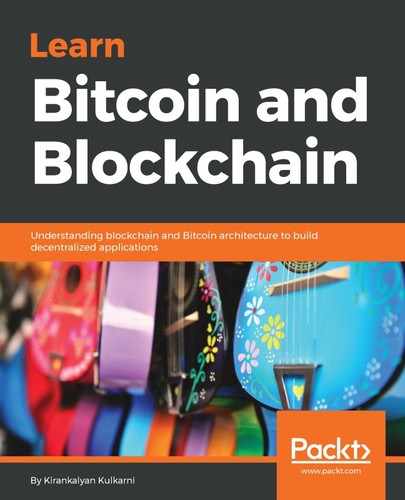We will now compare the three consensus algorithms that we have seen for a better understanding, and weigh them against certain parameters. The following table shows the state of respective consensus algorithms for each parameter:
| Parameters | PoW | PoS | PoET |
| Blockchain type | Permissionless | Both | Both |
| Transaction finality | Probabilistic | Probabilistic | Probabilistic |
| Transaction rate | Low | High | Medium |
| Token needed | Yes | Yes | No |
| Cost of participation | Yes | Yes | No |
| Scalability of peer network | High | High | High |
| Trust model | Untrusted | Untrusted | Untrusted |
Now, let's discuss the preceding table:
- Blockchain type: This indicates the type of blockchain platform, permission or permissionless, in which the consensus model can be used. This is mainly governed by the type of membership allowed by the consensus model. While PoW models are built exclusively for the permissionless platform with open-ended participation, they can technically be used with permission platforms but won't be ideal in that setting. PoS and PoET, by design, can work in both function types.
- Transaction finality: This indicates whether the transaction, once added to a block in the blockchain, is considered final. PoW- and PoET-based consensus models carry the risk of multiple blocks being mined at the same time due to their model of leader relationship in combination with network latency.
- Transaction rate: Platforms that can confirm transactions immediately and reach a consensus quickly have a higher transaction rate. PoW approaches are probabilistic and have to spend a significant amount of time-solving a cryptographic puzzle. Therefore, these models have high transactional latencies, hence a low transaction rate.
- Token needed: As the designs are based on the existence of a token, a cryptographic token is inherently required for PoW and PoS models, whereas PoET models do not require a token for a consensus to be achieved.
- Cost of participation: There are inherent costs associated for PoW and PoS to participate in a consensus. To develop the security deposit to declare interest and bond with the platform, PoW requires expending energy, which is a resource that is external to the consensus protocol, while PoS requires nodes to buy some initial cryptocurrency.
- Scalability of peer network: The scalability of the consensus model is its ability to reach consensus when the number of peer nodes is constantly increasing. All models summarized previously have high scalability.
- Trust model: This determines whether the nodes participating in the consensus have to be known or trusted. In PoW, PoS, and PoET, nodes can be untrusted as the mechanism to reach consensus is based on other means, such as computational work or security deposits. As long as more than 25 to 50% of the network is not adversarial, consensus decisions will not be effective.
There is one more parameter that is not listed here, which is adversary tolerance: that is the fraction of the network that can be compromised without the consensus being affected. Each consensus model has a certain threshold or true adversary tolerance.
